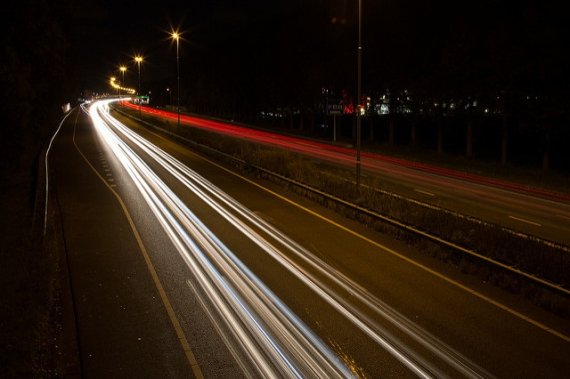42 percent of the microplastic that ends up in European seas via the sewer system consists of particles from car tyres. © Pixabay
This was revealed by a Wageningen model study of the Water Systems and Global Change (Carolien Kroeze) and Aquatic Ecology and Water Quality (Bart Koelmans) groups. Kroeze’s group works on the modelling of surface water pollution at the global scale. One of their models was used by master’s student Max Siegfried to map the pollution of the European seas with microplastics from sewage water. The project focused on the route covered by the plastics, through the sewers and rivers into the sea.
Point-sources
The central point in the calculations is the sewage treatment facilities. According to Kroeze, it is possible to estimate the amounts of microplastics entering and leaving these point-sources. ‘We have divided Europe into 623 basin areas. For each of these areas, we know the population densities, the number of households connected to the centralised sewage system and we can estimate the amounts of microplastics produced per person.’ When combined with the efficiency of the water treatment, it gives an idea of the amounts of plastics ending up in the rivers. Part of the plastics is lost along the way to the sea.
This is the first step. But the results are consistent with the few measurements that have been made so far.
Carolien Kroeze
Siegfried calculated that around 14.4 kilotonnes of microplastics are dumped annually in the five large bodies of waters surrounding Europe. With a total received mass of 5.6 kilotonnes, the Mediterranean Sea has to take up almost half of the dumped plastics, followed by the Black Sea (4.1 kt), the Atlantic Ocean (2.7 kt), the North Sea (1.1 kt) and the Baltic Sea (0.9 kt). These numbers are a first approach, says Kroeze. ‘This is the first step. The underlying data are still rather uncertain. But the results are consistent with the few measurements that have been made so far.’
Personal care
What is downright startling, according to Kroeze, is the composition of the microplastics that end up in the sea. ‘That is 42 percent car tyres. Before measuring, we expected the main culprits to be personal care products – creams, toothpaste, etc. A widely-discussed topic. But that is not the case, apparently. With just 10 percent, they take the fourth and last place on the list. After the tyre and road wear particles come laundry textiles in second place (29 percent) and household dust in third (19 percent). In the past decades, there has been a significant increase in the use of synthetics in textiles.’
 Kroeze does point out that this is not the full picture. Additionally to the sewer route, the spread of microplastics that contaminate water through diffuse sources (e.g. through wind or surface run-off)
Kroeze does point out that this is not the full picture. Additionally to the sewer route, the spread of microplastics that contaminate water through diffuse sources (e.g. through wind or surface run-off)
has since been mapped by PhD candidate Jikke van Wijnen. That has revealed that this contribution is much larger than that of car tyres. But the paper regarding that study has not been published yet. Nevertheless, according to the Wageningen study, increased wear resistance of tyres could help reduce the pollution of surface water with microplastics a bit. As would an improved sewage treatment.
Room for improvement
In several countries, including the Netherlands, water treatment facilities remove 95 percent of microplastics from the water. But the majority of Europe – and the world, for that matter – has much lower efficiencies. Three in four treatments facilities only remove a maximum of half the microplastics from the water. Additionally, many of the households in the countries around the Mediterranean Sea are not connected to the centralised sewage system. Kroeze’s model-based calculations indicate that much could be gained in those places.The article is availablehere.

